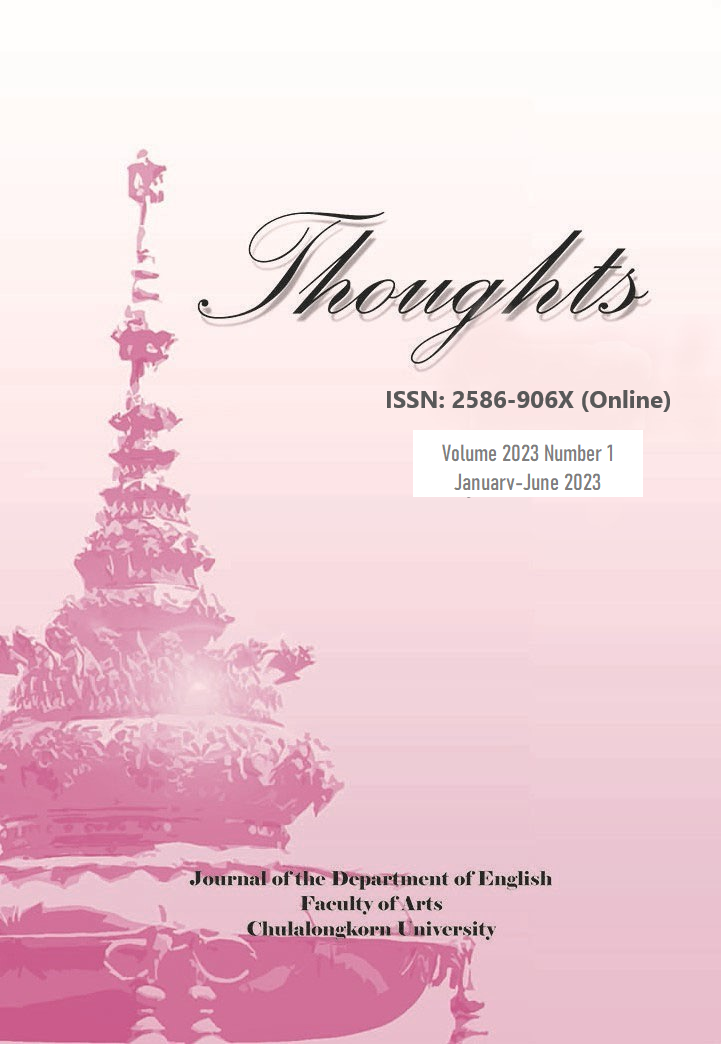“Back in the Nineties I was in a Very Famous TV Show”: Bojack Horseman and America’s Nostalgia
DOI:
https://doi.org/10.58837/CHULA.THTS.2023.1.2Keywords:
adult animation, nostalgia, American popular culture, the ninetiesAbstract
BoJack Horseman, an animated series launched in 2014 by Raphael Bob-Waksberg, achieved massive popularity for its exploration of complex issues such as addiction and mental illness through funny anthropomorphic animals and its references to 90s popular culture. Although BoJack Horseman seems to focus on how an individual attempts to reconcile with their past, a closer examination reveals that the struggle is not only personal, but also collective. This paper argues that nostalgia in BoJack Horseman reflects the crisis of American culture in the 2010s. Moreover, as a postmodern text, BoJack Horseman can be regarded as both a poison and a cure for nostalgia. In dealing with the glory of the nineties, the show surprisingly dismantles the museum-ized and invented past, and at the same time persuades audiences not to fixate on finding an authentic meaning in life, but rather to embrace the flux of the postmodern world.
References
Blake, W. (1982). The complete poetry and prose of William Blake (D. Erdman, Ed.). University of California Press.
Bloom, H. (1982). Commentary. In D. Erdman (Eds.), The complete poetry & prose of William Blake (pp. 909-928). University of California Press.
Bryant, L., Srnicek, N., & Harman, G. (2011). Towards a speculative philosophy. In L. Bryant, N. Srnicek & G. Harman (Eds.), The speculative turn: Continental materialism and realism (pp. 1-18). re.press.
Damon, S. F. (2013). A Blake dictionary: The ideas and symbols of William Blake. Dartmouth College Press.
Dushane, A. (2019). Speculative enthusiasm: William Blake’s Jerusalem and Quentin Meillassoux’s Divine Ethics. In C. Washington & A. C. McCarthy (Eds.), Romanticism and speculative realism (pp. 93-110). Bloomsbury Academic.
Fallon, D. (2017). Blake, myth, and enlightenment: The politics of apotheosis. Palgrave.
Fletcher, J. (2017). Leibniz, the infinite, and Blake’s Early metaphysics. Studies in Romanticism, 56(2), 129-155.
Frye, N. (1947). Fearful symmetry: A study of William Blake. Princeton University Press
Gottleib, E. (2019). Of Meillassoux’s contingencies and Scott’s Plots: Rethinking Probability in a World of Unreason. In C. Washington & A. C. McCarthy (Eds.), Romanticism and speculative realism (pp. 21-36). Bloomsbury Academic.
Gratton, P. (2014). Speculative realism: Problems and prospects. Bloomsbury.
Harman, G. (2007). On vicarious causation. In R. Mackay (Ed.), Collapse II: Speculative Realism (pp. 171-205). Urbanomic.
Harman, G. (2011). Appendix: Excerpts from L’Inexistence divine. In Quentin Meillassoux: Philosophy in the making (pp. 224-287). University of Edinburgh Press.
Harman, G. (2012). The well-wrought broken hammer: Object-oriented literary criticism. New Literary History, 43(2), 183-203.
Harman, G. (2015). Quentin Meillassoux: Philosophy in the making. Edinburgh University Press.
Israel, J. I. (2001). Radical enlightenment: Philosophy and the making of modernity 1650-1750. Oxford University Press.
Koslofsky, C. (2011). Evening’s empire: A history of the night in early modern Europe. Cambridge University Press.
Leibniz, G. W. (2014). The monadology (L. Strickland, Trans.). Edinburgh University Press.
Makdisi, S. (2015). Reading William Blake. Cambridge University Press.
Mee, J. (1992). Dangerous enthusiasm: William Blake and the culture of radicalism in the 1790s. Clarendon Press.
Meillassoux, Q. (2008). Spectral dilemma. Collapse IV, 261-275.
Meillassoux, Q. (2015). Science fiction and extro-science fiction (A. Edlebi, Trans.). Univocal.
Meillassoux. Q. (2006). After finitude: An essay on the necessity of contingency (R. Brassier, Trans.). Bloomsbury.
Mozart, W. A. (2001). The magic flute (B. D. Fisher, Ed.). Opera Journeys Publishing.
Outram, D. (1995). The enlightenment. Cambridge University Press.
Pocock, J. G. A. (2004). The re-description of Enlightenment. Proceedings of the British Academy, 125, 101-117.
Porter, R. (2001). The enlightenment. Palgrave.
Raine, K. (1968). Blake and tradition (2 Vols.). Princeton: Princeton University Press.
Robinson, H. C. (1907). From Crabb Robinson’s Diary. In A. Symons (Ed.), William Blake (pp. 54-129). E. P. Dutton and Company.
Tambling, J. (2005). Blake’s night thoughts. Palgrave.
Tsai, L-H. (2018). Enlightenment mythology and the politics of romanticism: Blake’s archetypal myth revisited. Huntington Library Quarterly, 81(1), 161-169.
Downloads
Published
Issue
Section
License

This work is licensed under a Creative Commons Attribution-NonCommercial-NoDerivatives 4.0 International License.
Copyright by the Faculty of Arts, Chulalongkorn University.
Photocopying is allowed for internal, non-commercial use only. Photocopying for other uses or for purposes other than indicated must be permitted in writing from the Faculty of Arts, Chulalongkorn University.
All views or conclusion are those of the authors of the articles and not necessarily those of the publisher or the editorial staff.


